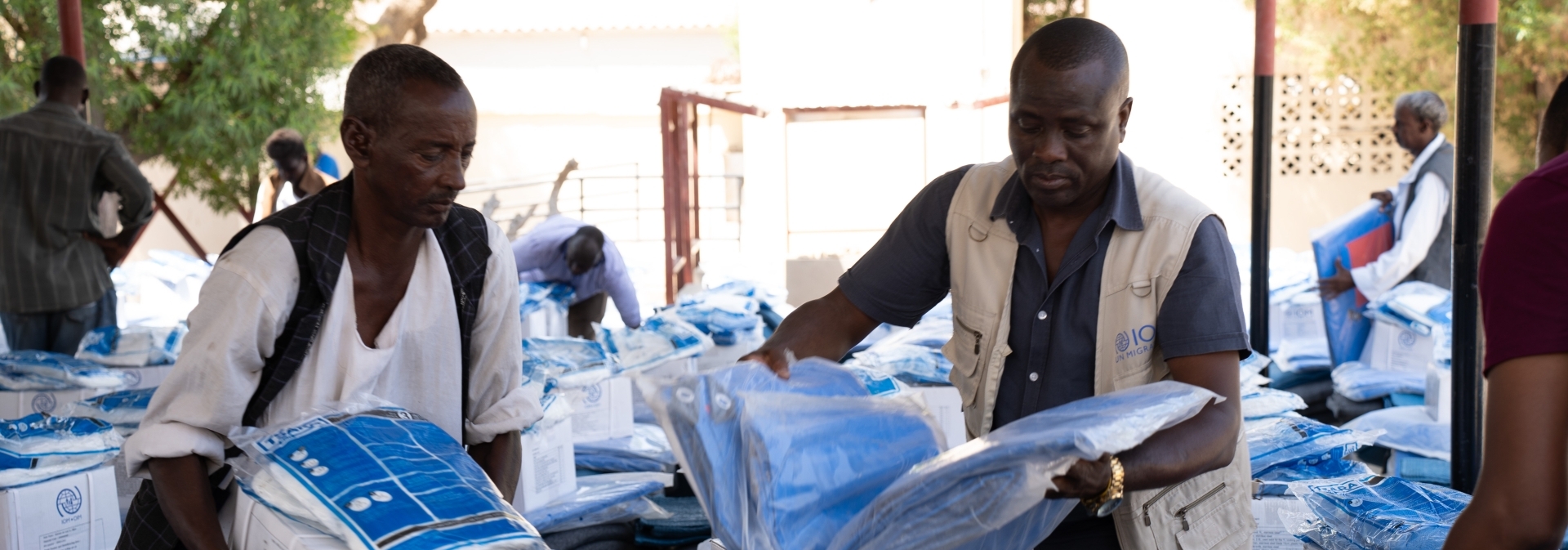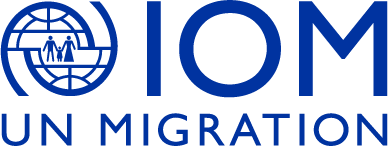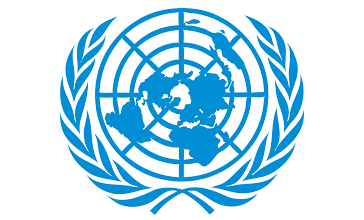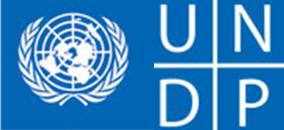IOM Vision
IOM will adopt an integrated approach in Sudan by supporting the people and Government of Sudan in managing the mobility dimensions of crises, including finding sustainable solutions to displacement. IOM will involve communities and promote localization during project design and implementation. IOM works across the humanitarian-development-peace nexus applying a conflict sensitivity lens to provide multisectoral humanitarian assistance to the most vulnerable while simultaneously promoting disaster risk reduction and emergency preparedness. IOM seeks to enhance the provision of basic services in underserved communities and address other drivers of displacement and fragility to contribute towards peaceful, inclusive and resilient communities.
Objective
Saving lives and protecting people on the move
IOM foresees that emergency preparedness and life-saving humanitarian assistance will be needed for the following population groups:
- Newly displaced IDPs, refugees, other migrants and populations affected by man-made or natural hazards.
- IDPs, refugees, and returnees in protracted displacement situations who continue to suffer from poor living conditions, lack of support and limited access to essential services and livelihood opportunities.
- Crisis-affected host communities in areas of displacement and return where services are unavailable or overstretched.
- Internal and international migrants in need of direct assistance or movement assistance including humanitarian evacuation.
- Stakeholders, including government, international and national NGOs, CSOs and CBOs in need of capacity building to better provide life-saving services and assist crisis-affected and vulnerable communities.
IOM will continue to provide support to governments, partners and relevant stakeholders by maintaining capacities to collect humanitarian and recovery data, timely and sector-specific needs assessment, track displaced people’s movements and needs, assess potential conditions for return and reintegration, and produce timely and high-quality actionable analysis. Products will be shared and support stakeholders to provide targeted, evidence-based responses to any crises and recovery.
Additionally, IOM will continue providing key support services to the full range of humanitarian, peacebuilding, and early recovery partners, with a focus on local organizations, namely through its Displacement Tracking Matrix (DTM), common humanitarian pipeline and the Rapid Response Fund (RRF) mechanisms.
IOM will support crisis-affected communities with basic needs by:
- Providing cash-based interventions (CBI) to complement in-kind assistance prioritizing newly displaced and vulnerable households focusing on people with special needs (PWSNs) to address their basic emergency necessities and reduce the use of negative coping mechanisms such as selling assets, underage marriage, etc. to buy food and medicines.
- Conducting comprehensive cash feasibility assessments, market assessments, additional needs assessments, and community consultations to confirm usage of the CBI modality most applicable in the context including bank transfers or Mobile Money to facilitate safe access for beneficiaries.
- Enrolling beneficiaries in the CBI programme based on predetermined criteria and distributing unconditional multi-purpose cash assistance (MPCA) for beneficiaries to buy food and other items that address their immediate basic needs in coordination with the CWG and other multisector partners to maximize the impact of the assistance (i.e., providing basic services such as health and distributing other non-food items (NFIs) along with the cash to ensure that beneficiaries have increased purchasing power).
- Holding information sessions for community participation to improve awareness regarding cash assistance usage, selection criteria, and duration of support.
- Conducting post-distribution monitoring to measure household satisfaction, impact of cash assistance, lessons learned and best practices.
IOM will contribute to better site management and coordination by:
- Scaling up site management and coordination through the recruitment and training of dedicated CCCM/site management staff.
- Collecting disaggregated population statistics on IDPs residing in displacement sites, including formal and informal IDP sites both in urban and rural areas, to support the SMS.
- Coordinating delivery of services through analysis of needs/gaps, mapping of site management partners, site monitoring, and facilitation of relevant coordination forums at site and area levels. Supporting the delivery of life-saving assistance within IDP gathering sites and ensuring access to information on service delivery in sites.
- Facilitate regular coordination and information management activities, with humanitarian actors and government officials to manage displacement sites.
- Supporting planning, development, maintenance, upgrades, or the re-planning and re-organizing of crowded IDP sites to increase the privacy and dignity of displaced populations, including installation of communal facilities, fire safety, infection prevention and control (IPC), and other protection measures to improve the wellbeing of site residents and ensure equitable access to humanitarian assistance and participation mechanisms.
- Contributing to site profiles that will identify access to service provision in sites.
- Promoting community participation and self-governance, including supporting displacement-affected communities' involvement in decision-making, and setting up a CFM and AAP channel for displaced populations to provide feedback and complaints on services they receive, as well as any protection concerns.
To reduce mortality, morbidity, and alleviate the suffering of crisis-affected individuals and host communities by ensuring access to and availability of quality life-saving health care and nutrition services with integrated MHPSS through:
- Rehabilitating existing primary healthcare facilities and specialized health facilities.
- Providing primary healthcare services through the operational support of existing health facilities and mobile clinics including but not limited to medical consultations, response to disease outbreaks including measles and cholera, sexual and reproductive healthcare, nutrition services, vaccinations, referrals and transportation for specialized medical assistance to secondary and tertiary facilities ensuring the continuity of care.
- Providing medical assistance through the MRRCs in coordination with relevant referral partners.
- Providing life-saving medicine, medical equipment, supplies and equipment to support the continuity of quality healthcare.
- Conducting awareness raising and risk mitigation of GBV, supporting CRSV/GBV survivors through psychological first aid (PFA) and clinical management of rape (CMR), and referrals as needed in coordination with Protection and MHPSS experts.
- Improving IPC, waste management and vector control in health facilities and communities to reduce risks of disease outbreaks and improve environmental health in coordination with WASH and Health clusters.
IOM will support national and local authorities in responding to the increased pressure at border crossings (points of entry/exit, PoEs) by:
- Conducting rapid needs and capacity assessments for humanitarian border management to identify capacity building measures to bolster preparedness and response.
- Training state and local authorities in evaluating migration movements and migration policies related to identity, temporary entry, health requirements, identification of potential victims of trafficking (VoTs), combating migrant smuggling, and safe referral of vulnerable migrants in need of protection.
- Supporting frontline workers to review their SOPs for natural, man-made or health emergencies, originating internally or from neighbouring countries.
- Providing PoEs with systems, infrastructure and equipment to enable frontline workers to more efficiently process cross-border movements, including in times of emergencies.
- Supporting state and local authorities to create border measures to assist in the delivery of aid, including goods and equipment, and entry for humanitarian workers.
To promote, protect, and support the psychosocial well-being and mental health of crisis-affected populations, IOM will provide services aimed at reducing psychosocial vulnerabilities during emergencies and support individuals’ and communities’ ability to cope by:
- Providing additional capacity-building support for doctors trained via the WHO Mental Health Gap Action Programme (mhGAP) and ensuring communities have access to treatment providers.
- Providing capacity building for frontline healthcare workers including counsellors, psychiatrists, community volunteers, and community leaders on Psychological First Aid (PFA), MHPSS mainstreaming and basic MHPSS skills to support local crisis-affected and displaced communities.
- Conducting mental health needs assessments and providing community-based mental health and psychosocial support such as awareness raising, psychological first aid, counselling and support groups through trained community health workers and psychosocial mobile teams (PMTs) during emergencies.
- Supporting the referral of persons with severe mental disorders to specialized mental health care facilities during and after emergencies.
- Co-leading the MHPSS TWG in Kassala State.
IOM will provide humane, dignified, and Voluntary Humanitarian Return (VHR) support to internal and international migrants (including third-country nationals (TCNs)) stranded by crises and IDPs, returnees, and refugees in need of urgent movement assistance, by:
- Facilitating humanitarian transportation and/or humanitarian voluntary return to community or country of origin, including travel by air, land, or water as appropriate; including pre-departure activities listed below as well as the provision of accommodation and food.
- Conducting protection screening and pre-embarkation checks to ensure that individuals are fit to travel, protection concerns are identified and measures are in place to address prior to departure or post-arrival.
- Provision of pre-departure briefings and information sessions on processes to ensure individuals are informed and provide consent to travel.
- Provision of operational and medical escorts and additional specialized protection assistance/designated caseworker for particularly vulnerable caseloads.
- Providing support, liaison, and coordination services for both the host country and country of origin embassies or consulates to organize reception assistance and appropriate referral services including in-kind or financial support, where applicable.
- Providing pre-departure counselling, returnee reintegration counselling as well as required MHPSS support.
IOM will mainstream and integrate protection and GBV risk mitigation, in line with IOM’s Institutional Framework to Addressing Gender-Based Violence in Crises, in all crisis and post-crisis responses by:
- Ensuring that protection is mainstreamed in all of IOM’s interventions through training of staff and partners, review of tools used for programming and operation, reinforcing access to CFMs, and establishing/reinforcing safeguarding measures.
- Monitoring the protection situation in key locations and collecting relevant information on needs, gaps, and trends for advocacy and responses.
- Raising awareness within crisis-affected communities on the risks of irregular migration, community-based protection mechanisms/resources, informal dispute resolution, and crisis mediation.
- Conducting protection risk assessments in line with the Global Protection Cluster standards and providing Protection Case management through direct assistance and internal and external referral to other relevant services based on the needs identified, through the MRRCs and mobile clinics in coordination with health staff on a needed basis.
- Providing capacity building for local partners on safe communication and response to protection incidents.
- Coordinating with relevant partners to ensure that survivors of GBV, including CRSV survivors, are referred to relevant specialized services.
- Supporting existing women and girls safe spaces, child-friendly spaces, recreational activities for trauma survivors, and other local initiatives that enhance the protection environment within crisis-affected communities.
Life-saving assistance will be provided to people newly displaced using resilience-building approaches to improve access to water, sanitation, and hygiene (WASH) services including:
- Conducting assessments to identify accessibility to potable water points and understanding local practices, risks, and safety concerns to inform responses.
- Drilling new boreholes, extending water networks, installing/rehabilitating hand pumps, emergency bladders and water yards, and providing water trucking in emergencies.
- Monitoring groundwater levels using data loggers to ensure water table sustainability.
- Providing sustainable and environmentally friendly power sources (e.g. solar) for water points and biogas for alternative fuel sources.
- Constructing/rehabilitating latrines, handwashing and other sanitation facilities.
- Launching hygiene promotion campaigns through risk communication and community engagement (RCCE) to raise awareness of improved hygiene practices.
- Supporting communities to develop IPC measures to manage disease outbreaks such as COVID-19, cholera, and Hepatitis E.
- Providing liquid and solid waste management solutions and guiding responsible authorities in the management of waste disposal sites.
- Procuring, prepositioning, and distributing of hygiene kits, menstrual hygiene management kits, and other WASH items (e.g., soap and chlorine), equipment, and materials for proper water treatment.
- Strengthening the capacity of local authorities and community-level structures to maintain WASH infrastructure/facilities.
Shelter and NFI interventions will improve living conditions for vulnerable populations, targeting camps and communities with high rates of displacement or contribute to the safe return or relocation of vulnerable groups by:
- Conducting assessments to identify and prioritize the most vulnerable households and individuals to provide assistance in line with their needs.
- Operating the common humanitarian pipeline system, including procuring, prepositioning and distributing through emergency shelters (ES), non-food items (NFI), WASH and medical consumable items partners; Develop SoPs for the common humanitarian pipeline system and providing training for partners on targeting, distribution, monitoring and mitigation of protection and GBV risks.
- Coordinating with Housing, Land and Property (HLP) actors to ensure that land tenure security is provided to displaced communities targeted through shelter interventions.
- Coordinating site and settlement planning involving all relevant stakeholders including authorities, communities, site management actors, WASH and other sectors.
- Procuring, prepositioning, and distributing NFI kits, ES kits, shelter repair tools and kits, locally sourced/environmentally friendly materials construction materials for durable shelters, and/or voucher or cash assistance to meet ES/NFI needs.
- Distributing information, education, and communication (IEC) materials, conducting information sessions to promote proper use, handling, and storage of NFIs to ensure the longevity of the items and secure shelters, especially against flood and fire hazards.
- Based on community consultations, creating cash-for-work (CFW) programmes to clean up debris, light construction, etc.
To build the capacity of partners to provide life-saving humanitarian assistance, IOM will support NGOs, CSOs and CBOs by:
- Managing a flexible, efficient, and needs-based fund disbursement mechanism - Rapid Response Fund (RRF) - to further support humanitarian actors who are assisting people affected by natural and/or man-made hazards in Sudan in an effective and timely manner.
- Providing capacity-building training on proposal development and grant writing for partners under the following sectors of emergency response: shelter and settlements, NFIs, WASH, protection, health, food security and livelihoods, and humanitarian coordination assistance.
- Providing capacity-building training on humanitarian principles such as do-no harm, PSEA, and AAP and narrative and financial reporting in line with donor guidelines to ensure people-centred, rights-based, and consistent implementation across the funding mechanism.
- Conducting monitoring and evaluation visits to implementing partners’ project sites to ensure that funds are used effectively by IN/NNGOs, outputs and outcomes are achieved, successes and lessons learnt are properly documented and reported and adjustments are made for future programme implementation.
IOM will develop capacities of key stakeholders to improve humanitarian response and support community emergency preparedness and resilience by:
- Conducting community assessments including hazard and resource mapping to identify gaps in services and response including warehouse capacity, prepositioning capability, and accessibility of relief items at state and community level.
- Building the capacity of local actors in emergency preparedness and supporting the development of contingency and action plans for local communities.
- Capacity building which will also include simulation exercises (SIMEX) to increase state and community level actors’ preparedness to respond to crises including sensitization workshops on guidelines for Mass Evacuations during Natural Disasters (MEND) and Migrants in Countries in Crisis (MICIC).
- Developing mechanisms and SOPs on topics such as warehousing, stock management, and supply chain management.
- Procuring, prepositioning, and distributing key supplies and items to rapidly respond to emergencies such as floods and mass displacement.
- Conducting research to implement risk-informed approaches that integrate prevention, emergency preparedness, and response including government planning and promoting innovative solutions for provision and management of basics services before and during crises.
- Seeking to establish humanitarian hubs at border areas in coordination with other UN agencies and relevant government counterparts to assist internal and cross-border migrants during crises.
IOM will use the Displacement Tracking Matrix (DTM) to regularly capture, process, and provide partners with multi-layered information products, including sex and age disaggregated data, and the locations, composition, vulnerabilities, and needs of displaced and mobile populations to deliver more targeted humanitarian assistance and response, as well as produce an evidence base for programme strategy, design, and operational planning across the country. IOM estimates it will reach over 600,000 IDPs and other affected populations indirectly through the services provided by IOM’s partners, especially local actors, and wider humanitarian community because they are informed and strengthened by relevant data for action and insight. The following methodologies will be used in Sudan in 2024 to provide critical information management services:
- Weekly Displacement Snapshots
- Monthly Displacement Overviews
- Mobility Tracking
- Early Warning Flash Alerts and Emergency Event Tracking
- Situation Assessments
- Multi Sectoral Needs Assessment (MSNA)
- Integrated Local Assessment
- Registration activities
- Flow Monitoring Registry
- Return Index
- Transhumance Tracking Tool

Objective
Driving solutions to displacement
IOM foresees that community stabilization, peacebuilding, and durable solutions integrated with risk reduction strategies, including through climate change adaptation, will be needed for the following population groups:
- IDPs in protracted displacement situations who continue to suffer from poor living conditions and lack of support.
- IDPs, refugees, returnees, and other vulnerable internal and international migrants (including former fighters) exposed to disaster risks and/or facing challenging conditions for return and (re)integration such as residual insecurity, damage to property and public infrastructure, limited access to basic services and livelihood opportunities, and fractured social relations.
- Underserved host communities in areas of displacement and return where services are lacking, overstretched, and/or inter/intra communal conflict persists.
- Local communities exposed to multi-hazard risks including natural hazards and health risks, who may otherwise have to leave their homes, because of critical emergencies and limited preventative measures or unavailability of essential services.
- Stakeholders including government counterparts, CSOs and CBOs in need of capacity building to better address the longer-term impacts of crises on affected and vulnerable communities..
IOM aims to address the drivers and effects of displacement and irregular migration related to conflict and natural hazards by:
- Promoting participatory decision-making through IOM’s community-based planning process and designing interventions based on community priorities.
- Providing basic services and infrastructure such as community-owned buildings (schools, community learning centres, recreational facilities) as well as community-based programmes (farming and small business cooperatives) to promote social cohesion and address grievances around strained and overused resources.
- Building community capacity for collective, equitable, and sustainable management of natural resources including integrated resource management (IRM) and basic services.
- Facilitating complementary capacity building of communities and authorities on climate-smart agriculture, drought-resistant agricultural techniques, and livestock management, to manage food insecurity, secure livelihoods, and reduce tensions over limited resources.
- Facilitating market-oriented vocational and livelihood training and supporting inclusive skills development for IGA in agriculture, livestock, trade, animal health and other livelihood opportunities specifically targeting vulnerable members of the community.
- Distributing in-kind income generating assets, providing conditional cash or voucher assistance for income generating activities, or supporting access to financial institutions based on community-identified priorities and available value chains, in coordination with participating local institutions and associations.
IOM will contribute to the strengthening of health systems and inclusion of migrants, and building resilience of at-risk communities against public health threats by:
- Monitoring the needs of migrants, including IDPs, conducting needs assessments, and leading the integration of migration data into the national health system as needed/where possible.
- Contributing to relevant national public health strategies and plans, including health emergency preparedness/response plans and National Health Information System (HIS) plans.
- Facilitating the utilization of the national health insurance system to promote universal health coverage (UHC) for migrants, through advocacy and collaboration with the National Health Insurance Fund (NHIF).
- Improving access and quality of care for individuals with HIV or TB, especially in hard-to-reach areas.
- Strengthening the capacity of local authorities and communities along the border to prevent, detect, and respond to health threats within the mobility continuum, including on public health/community-based surveillance to empower frontline workers to address challenges that migrants may encounter along migratory routes (e.g., lack of access to health/nutrition services or information).
- Empowering and engaging youth in the community on health promotion activities in coordination with medical students’ network (Med SIN-Sudan).
- Supporting local NGOs by providing financial and technical support.
IOM will further support local authorities, healthcare facilities and community healthcare workers in emergency preparedness and response for natural and man-made hazards by:
- Building capacity of frontline healthcare workers on public health threats, public health surveillance and IPC, and referral of cases of outbreak-prone diseases like cholera, acute watery diarrhoea (AWD), or malaria.
- Strengthening health information management systems to ensure early detection and response to public health threats.
- Supporting health surveillance and disease screening at PoEs by developing gender sensitive SOPs for disease surveillance and IPC.
- Rehabilitating health facilities with sustainable power sources safe access to water, cold chain and hygiene supplies for cleaning and disinfection.
- Procuring and prepositioning essential medicines and medical supplies in strategic locations.
- Strengthening community health activities including awareness raising on public health threats, community-based disease surveillance and response, and provision of rickshaw ambulances.
- Providing health promotion and RCCE support including messaging on GBV risks and referral pathways during crises.
- Building the capacity of cross-border health taskforces and coordination mechanisms.
- Promoting a ‘one health’ approach to emergency preparedness to achieve more comprehensive and efficient contingency planning and public health emergency response, including strengthening community-based surveillance systems that monitor animal health.
IOM will promote and support MHPSS at individual, family, and community levels to contribute to wider efforts to strengthen social cohesion, recovery, and crisis prevention through community engagement by:
- Training community health workers on the topic of the prevention of mental health issues in transition and recovery contexts and how to address mental health and psychosocial challenges that migrants and host communities face during crises.
- Conducting community information sessions, focus group discussions, and workshops on the prevention and treatment of mental health issues by introducing psychoeducation in primary healthcare centres and social, educational and religious platforms in post-conflict environments and providing resources and referrals to service providers for both migrant and host communities.
- Conducting mental health and psychosocial support activities including socio-relational activities, counselling, and referral to specialized mental health care services in vulnerable communities.
- Integrating MHPSS components into income-generating activities (IGA) in accordance with IOM’s MHPSS and Livelihood Integration (MLI) manual. This includes the identification of essential psychosocial skills and coping mechanisms that can support participants to engage fully and benefit from livelihoods programming, promoting their ability to take full advantage of their work in the short and long-term.
IOM will additionally contribute to strengthening of MHPSS institutional capacity of the federal and state MoH and frontline healthcare workers by:
- Conducting training and providing other technical support to state and local MHPSS workers and service providers to provide longer-term MHPSS interventions.
- Coordinating with and (co-)leading the MHPSS TWG, in Kassala.
- Supporting community-level support networks and structures that support sustainable (re-)integration of returnees and, focusing on building the capacity of local actors to provide longer-term oriented MHPSS interventions.
IOM will contribute towards reducing risks of local conflicts (or increased conflict) by working with communities to identify drivers of conflict, strengthen capacities, and deliver peace dividends through:
- Conducting conflict analyses, including using Transhumance Tracking Tool data, to develop an early warning system (EWS) that identifies conflict hotspots along migratory routes.
- Supporting local peace processes, reconciliation efforts, conflict resolution mechanisms and other initiatives that promote social cohesion.
- Facilitating dialogues with diverse groups to contribute towards restoring trust and mitigating future violent conflict.
- Enhancing traditional conflict resolution mechanisms and building the capacity of local rural courts/institutions to facilitate regulated access to pastures and resolve land and other issues.
- Increasing access to water and other basic services for pastoralists and communities along migration corridors.
- Developing IRM systems to promote coordinated development/management of water, land and other communal resources, to reduce conflict over resources and maximize socio-economic gains without compromising the sustainability of vital ecosystems.
- Strengthening local protection mechanisms to improve security and promote trust building and accountability between local authorities and the communities they serve.
- Building the capacity of local actors to respond to the challenges of disarmament, demobilization and reintegration (DDR) and understand barriers to reintegration.
IOM will support livelihoods and resilience building by:
- Providing small grants to CBOs (existing community solidarity/mutual aid initiatives) as seed funding for livelihoods and/or any life-sustaining community activities.
- Supporting agricultural or pastoral livelihoods through the provision of input kits and seeds/asset replacement.
- Providing networks of women, girls and PWSN with IGA tailored to their specific needs.
- Facilitating complementary capacity building of communities and authorities on climate-smart, drought-resistant agricultural techniques, and livestock management, to reduce food insecurity, secure livelihoods, and reduce tensions over limited resources.
- Facilitating market-oriented vocational/livelihood training and supporting inclusive skills development for IGA in agriculture, livestock, trade, animal health and other sustainable livelihoods.
- Based on community consultations, creating CFW programmes and construction-oriented vocational training for community members to build transitional and/or durable shelters.
- Improving access to local IGA opportunities and providing seed funding to community-led initiatives that promote collective action and social cohesion.
- Distributing in-kind income-generating assets, providing cash or voucher assistance, or supporting access to financial institutions based on community-identified priorities and profitable value chains, in coordination with participating local institutions and associations.
IOM aims to provide life-sustaining WASH services by:
- Conducting WASH assessments such as knowledge, attitude, and practice (KAP) surveys to identify accessibility to potable water points and understand sanitation and hygiene practices, risks, and safety concerns to inform programming.
- Increasing access to safe and clean water by drilling, constructing, and/or rehabilitating water points including ground water monitoring, and providing water treatment as well as prepositioning of spare parts and tools to maintain water points; ensuring that communities have better livelihood opportunities by providing them with sufficient water for agriculture and livestock management.
- Using community-led approaches to total sanitation (CLTS) to engage the community in designing the responses and supporting construction of appropriate latrines.
- Building the capacity of community members to establish WASH management committees to support the operation and management (O&M), and maintenance of facilities and conduct community-led sanitation and hygiene awareness campaigns.
- Actively working with government and national water authorities to build institutional capacity including structures, coordination, and management mechanisms inclusive of and for regular operation and management (O&M) activities including human resources, supplies and financial resources to support local communities with sustainable WASH services.
IOM will also support emergency preparedness and response to natural and man-made hazards at the community level by:
- Procuring and prepositioning essential WASH items (e.g. hygiene kits, etc.) in strategic locations.
- Providing technical assistance, support and equipment for community-level water management committees to improve water supply and sanitation facilities.
- Supplying communities that experience seasonal outbreaks of cholera and other water-borne diseases with water consumables to treat drinking water.
- Providing soap and detergents including vector control consumables (e.g., mosquito nets) to maintain healthy communities.
- Supporting community-led hygiene and health promotion activities in IDP gathering sites, border communities and PoEs, including garbage collection campaigns.
IOM will, when possible, address challenges related to housing, land and property (HLP) rights, claims and restitution by:
- Providing HLP assistance to beneficiaries alongside housing-related interventions, including both legal aid through representation and information counselling, adapted to the context and available administrative services.
- Supporting the recovery of civil documentation and personal documents.
- Developing local capacities of CSOs, legal aid services and government institutions by providing policy guidance, expert advice, training and capacity development, supporting the coordination and clarification of instructions and claim pathways and technical assistance for HLP rights.
- Ensuring HLP rights are taken into account during shelter and WASH interventions.
- Supporting with guidance to both IOM and partners on HLP issues related to evictions and other risks in displacement settings including in gathering sites.
- Supporting detailed assessments to ascertain needs, evaluating the cost of rehabilitations, and engaging communities and local authorities through dialogues and capacity building.
- In coordination with key stakeholders, rehabilitating/reconstructing damaged infrastructure as part of a broader reconciliation process.
IOM aims to develop DRR strategies and mechanisms to prevent or reduce displacement triggered by natural hazards, environmental degradation, or adverse effects of climate change, and build the resilience of vulnerable communities to existing and future disaster risks. DRR approaches and interventions will also be used as entry points for wider community stabilization programming by:
- Implementing community hazard, vulnerability, and capacity assessments in high-risk locations to capitalize on local knowledge and ensure the most needed interventions are prioritized. The assessments will focus on supporting communities to identify potential hazards in their area and the potential impact on assets and livelihoods. Data on mobility will also inform trends on population movements due to hazards and climate change.
- Building capacity of communities, local government institutions and civil society organizations to develop and implement DRR and adaptation plans including rebuilding hazard-resistant shelters, risk-proofing critical community infrastructure, implementing structural DRR measures and strengthening flood EWS.
- Training local authorities and selected community leaders on DRR to support community early recovery and raising awareness on disaster risk mitigation measures.
- Establishing community DRR committees with representation from vulnerable groups such as the elderly, women, and people with disabilities, with the ability to cascade the awareness-raising campaigns, develop resilience strategies, and contribute to community-based DRR plans.
Sudan
The map used here is for illustration purposes only. Names and boundaries do not imply official endorsement or acceptance by IOM.
Figures are as of 31 December 2023. For more details of IOM's operational capacity in country, please see the IOM Capacity section.


























